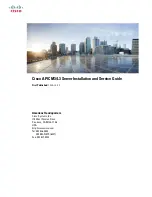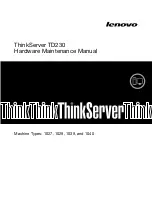
Chapter 2. Architecture and technical overview
35
Later, dynamic LPAR increased the flexibility, allowing selected system resources, such as
processors, memory, and I/O components to be added and deleted from dedicated partitions
while they are executing. This requires an attached HMC, with the proper level of software, to
control the system resources and an updated system firmware level to electronically isolate
systems resources. The ability to reconfigure dynamic LPARs encourages system
administrators to dynamically redefine all available system resources to reach the optimum
capacity for each defined dynamic LPAR.
Dynamic logical partitioning is supported by SUSE LINUX Enterprise Server 9, or later, but
with reduced functionality (changing memory attributes dynamically is not supported at the
time of writing). Dynamic logical partitioning is not supported by current version of Red Hat
Enterprise Linux AS for POWER Version 3.
USB resources are considered a single group, as are slimline devices. Groups can only be
allocated to a single partition at a time.
2.9.2 Virtualization
As an optional feature of the OpenPower 720, logical partitions requiring dedicated resources
may now be able to take advantage of a new technology that allows resources to be
virtualized, allowing for a better overall balance of global system resources and their effective
utilization.
Virtual Ethernet
To enhance intercommunication between partitions, either dedicated partitions or partitions
using Micro-Partitioning technology, Virtual Ethernet allows in-memory connections at a high
bandwidth from partition to partition. Virtual Ethernet working on LAN technology allows a
transmission speed in the range of 1 to 3 GB/sec depending on the MTU
3
size. Virtual
Ethernet connections (up to 256) are supported in a partition, where a single Virtual Ethernet
resource can be connected to another Virtual Ethernet, a real network adapter, or both in a
partition.
Micro-Partitioning technology
Based on the partitioning concepts of a stable and well-known mainframe technology and
existing LPAR/dynamic LPAR implementation on POWER4 and servers, The
POWER5 systems introduce an enhanced partitioning model available as a hardware feature.
The Micro-Partitioning model offers a virtualization method of system resources. In POWER5
processor-based systems, physical resources are abstracted into virtual resources that are
available to partitions. This sharing method is the primary feature of this new partitioning
concept and it happens automatically after a initial system setup.
POWER5 Micro-Partitioning specifies processor capacity in processing units. One processing
unit represents 1% of one physical processor. A partition defined with 220 processing units is
equivalent to the power of 2.2 physical processors. Creating a partition using
Micro-Partitioning technology, the minimum capacity is 10 processing units, or 1/10 of a
Note: On the OpenPower 720, LPAR, dynamic LPAR, and other advanced virtualization
features such as Micro-Partitioning, virtual Ethernet, are available only when a system is
configured with the POWER Hypervisor feature, FC 1965.
3
Maximum Transmission Unit
Summary of Contents for eServer OpenPower 720
Page 2: ......
Page 28: ...18 OpenPower 720 Technical Overview and Introduction...
Page 68: ...58 OpenPower 720 Technical Overview and Introduction...
Page 72: ...62 OpenPower 720 Technical Overview and Introduction...
Page 73: ......
















































